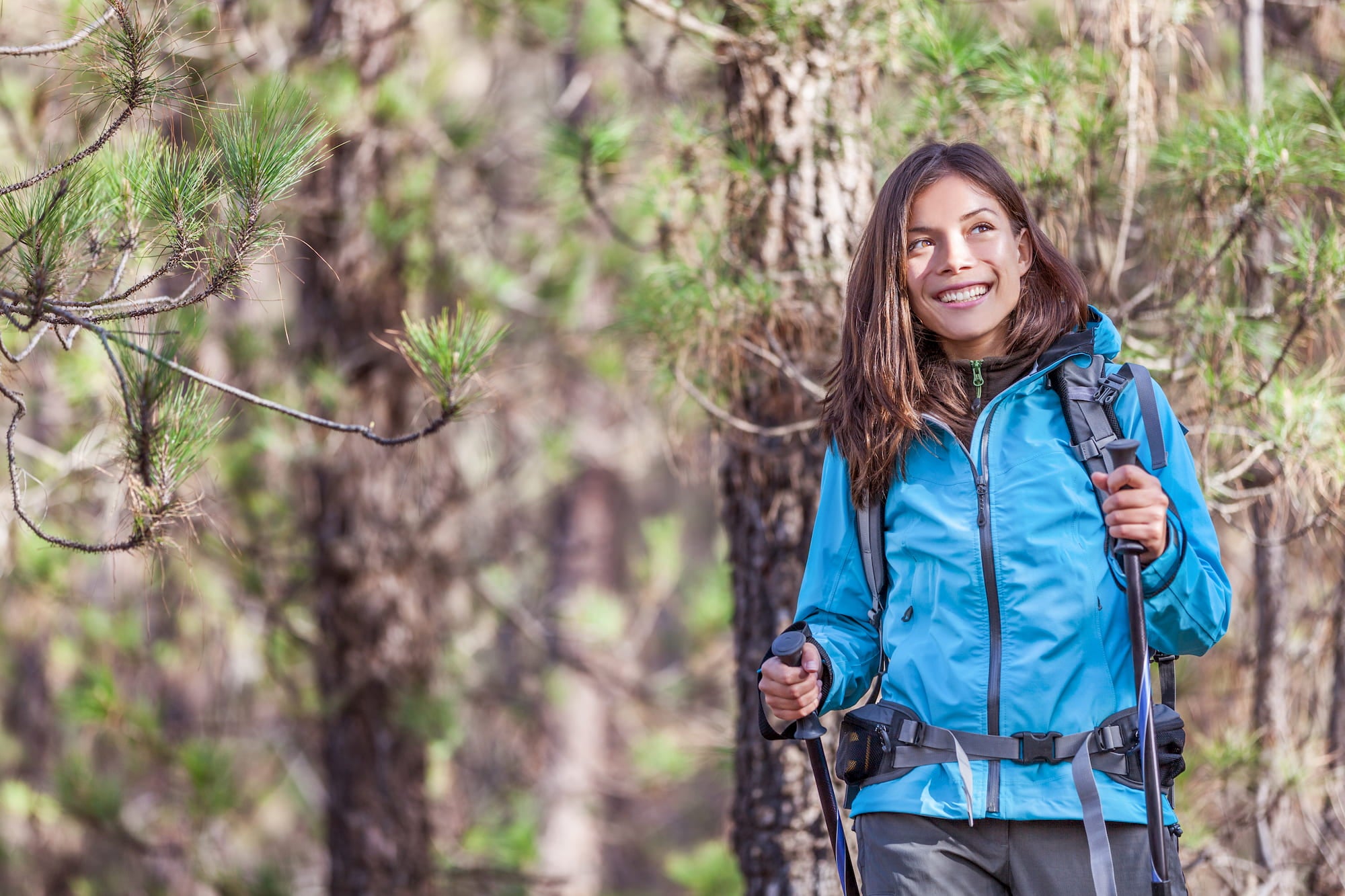Essential Things You Should Bring on Every Hike
Everyone likes going for a stroll in the park but not everyone wants to climb up a mountain. For those of you who feel at home in the great outdoors and like to take on the unknown, you know how important it is to be equipped with the right gear and to wear clothing that is appropriate for the current season.

Lightweight Backpack & Running Vest
The most important characteristic of any backpack is its comfort, which is why the greatest packs have unique qualities that make them more pleasant to carry. Choose camping backpacks with ventilated shoulder padding and elastic back support for maximum comfort – they make carrying a backpack less exhausting. No matter how long the trail is, you’re going to need a decent backpack to carry your belongings in. You want a backpack that is weather-resistant, durable, however, you also want it to be lightweight. Here you will have all of the things you need such as an emergency kit, food, water, toilet paper, camping gear, etc.
Once you get to your desired destination and you want to continue exploring, or perhaps you like to go for a run in the woods, you’re going to need hydration packs Australia experts claim for running. And why do you need a running vest when you can easily take a bottle of water with you? Well, first of all, hydration packs have body-hugging profiles and are specifically designed to eliminate bounce. While jogging, it’s vital to stay hydrated, and a hydration pack is a great way to do so. This hydration system is more than just a backpack; it’s worn like a vest and includes all the storage you’ll need. So, whether you are into trail running, adventure racing, multisport or merely like to commute running to work, you can get yourself hydration packs Australia made goodies and level up your experience.

Essentials for a Successful Adventure
Depending on where you’re going, you’re most likely going to need tools to get around such as a map, compass, altimeter, GPS device, personal locator beacon (PLB) or satellite messenger. You should always have a headlamp plus extra batteries, a portable charger and cables on you. Pocket-knife is another tool that is multi-purposeful and it could be a life-saver and it barely takes up any space at all. Without a warm, crackling bonfire, camping isn’t complete, so have the materials on hand to get one going quickly.
A flint and steel, matches, a cigarette lighter, or a magnesium fire starter can all be used to create a fire when camping. If you’re going to use matches, make sure they’re water-resistant. Even if you don’t have a life-threatening accident while camping, a long day of hiking can leave you with blisters that need to be bandaged. If left untreated, small cuts and scrapes can easily get infections, so keep bandages and antiseptic available. Other items to add to your first aid pack are scissors, glue, gauze, soap, a CPR mouth barrier, and an emergency whistle.
Durable and Dry Clothing Is a Must
Because you only have a few changes of clothes when you go camping, it’s critical to keep them dry. Walking around in wet clothes is not only uncomfortable, but it can also be dangerous in colder climates where hypothermia is a problem.

Wet clothing is also heavy, making transporting a backpack uncomfortable and difficult. Choose a rain jacket that is lightweight and waterproof and can support numerous layers of clothes. If it won’t cover your backpack completely, put on a second rain bag to protect your belongings.
In the dead of summer, you can get away with wearing the minimum of what’s recommended for the colder season. But here the most important thing is bug repellent and sun protection for your eyes and your skin. In the fall, however, the terrain may be a little wetter and rougher and your pack may be a little heavier because of the extra clothing. Synthetic jackets are ideal for most of the country’s normal fall weather. They breathe far better than down and continue to insulate efficiently when wet, making them an excellent outer layer for chilly (and occasionally damp) weather.
Best Footwear and Foot Care
Non-waterproof hiking shoes offer better breathability and are a great match for hikers who frequent mostly dry trails. Waterproof hiking shoes are good for those who live in rainy and wet climates, while non-waterproof shoes offer better breathability and are a great match for hikers who frequent dry trails.
Consider pairing a waterproof design with a pair of gaiters for optimal protection as the snow starts to fall or if you plan on hiking in icy cold weather. The best kind of running shoes for hiking are trail running shoes, which are frequently recommended by expert hikers. Road running shoes will not perform as well as trail running shoes, but they will do the job.

It’s crucial to examine the terrain as well as the activities planned for the trip when camping. Will you be hiking? Fishing? Be aware of your schedule and make plans accordingly. Always wear sturdy shoes before leaving the campsite. Bring a pair of flip-flops. Even for short walks between tents around camp, it’s safer to wear flip flops than to go barefoot. Bring flip flops for short distances to avoid having to put on lace-up shoes and socks, as well as to resist the temptation of wandering barefoot. When your feet are exposed, use sunscreen and insect repellent.






